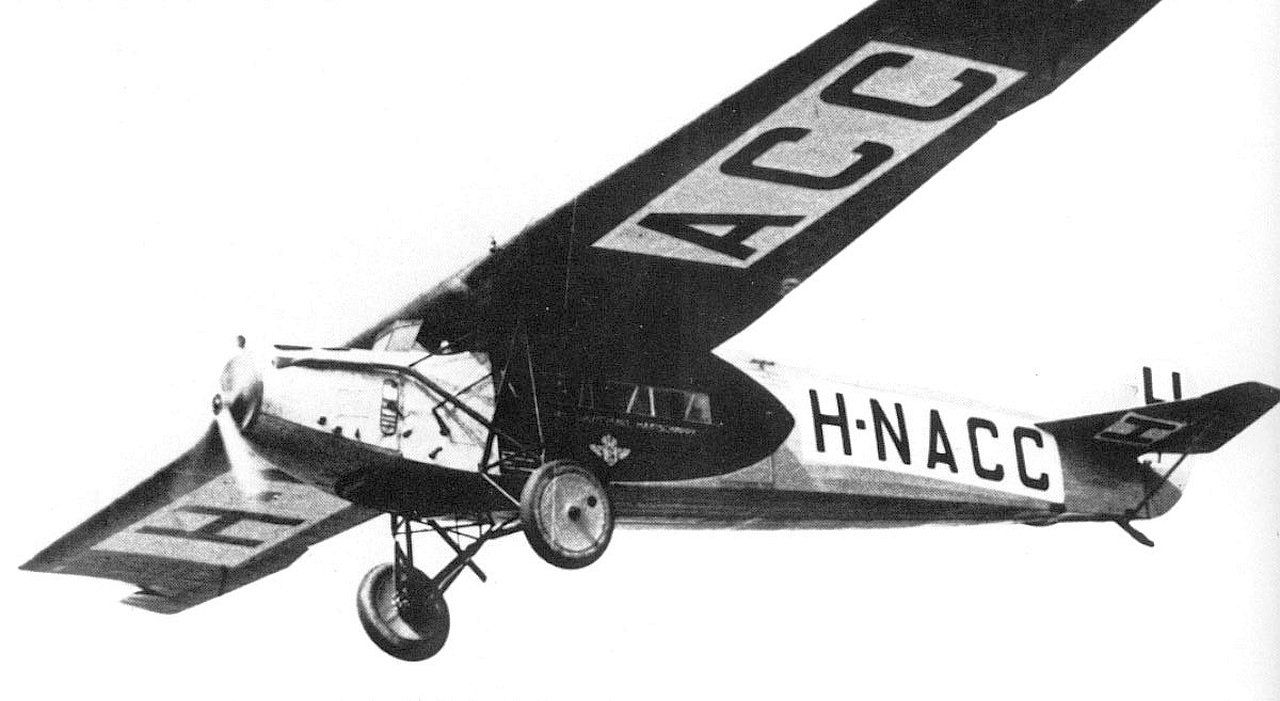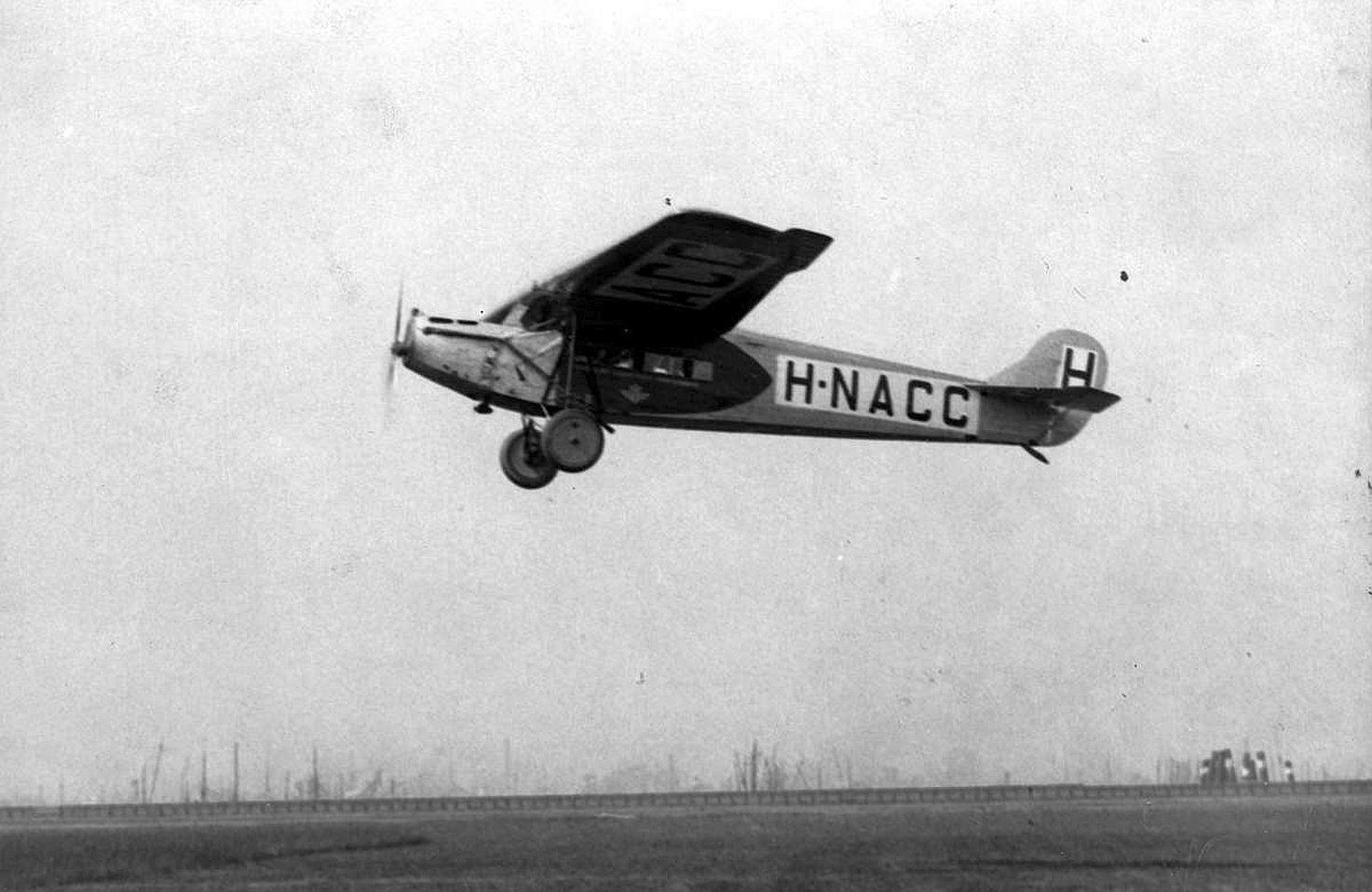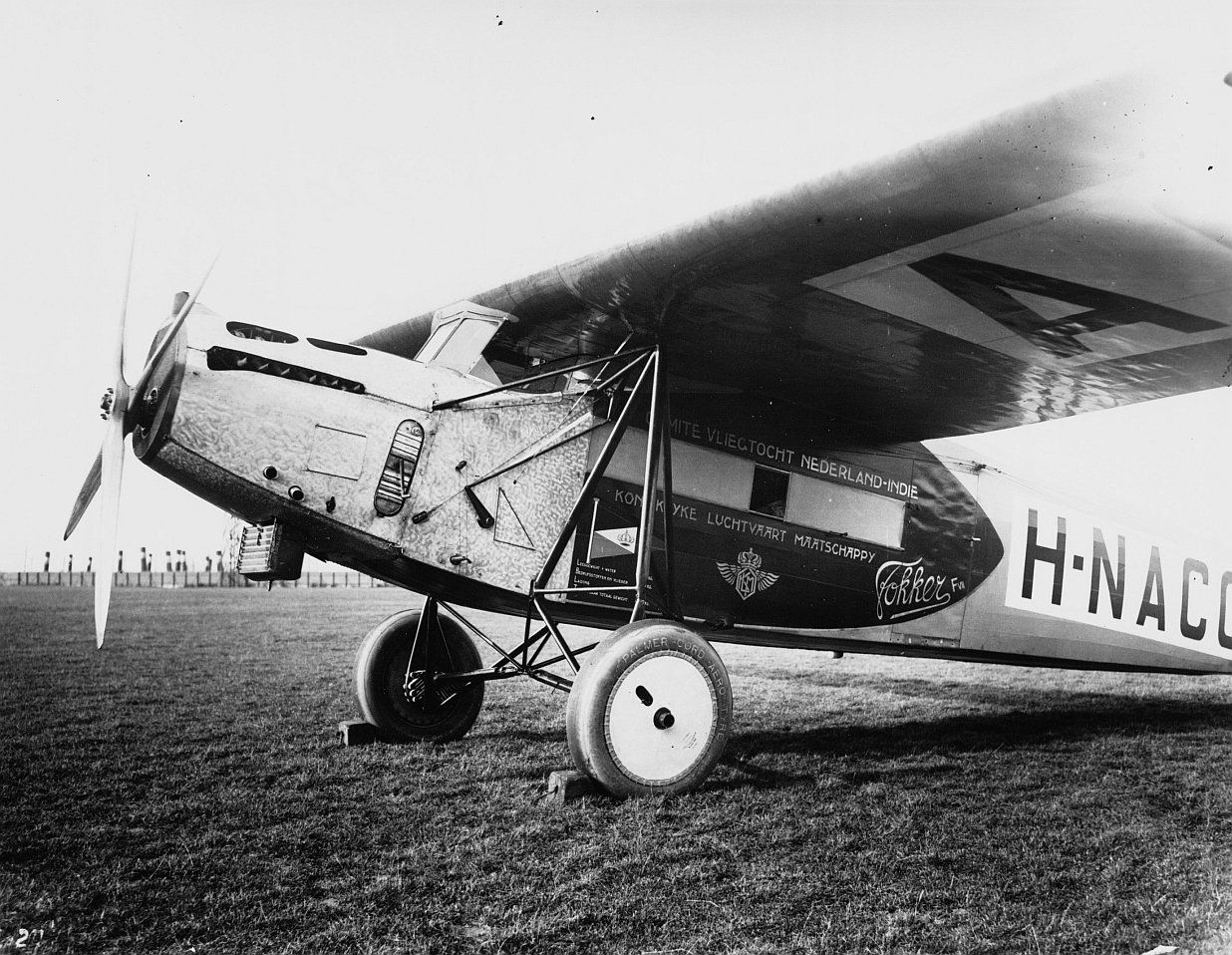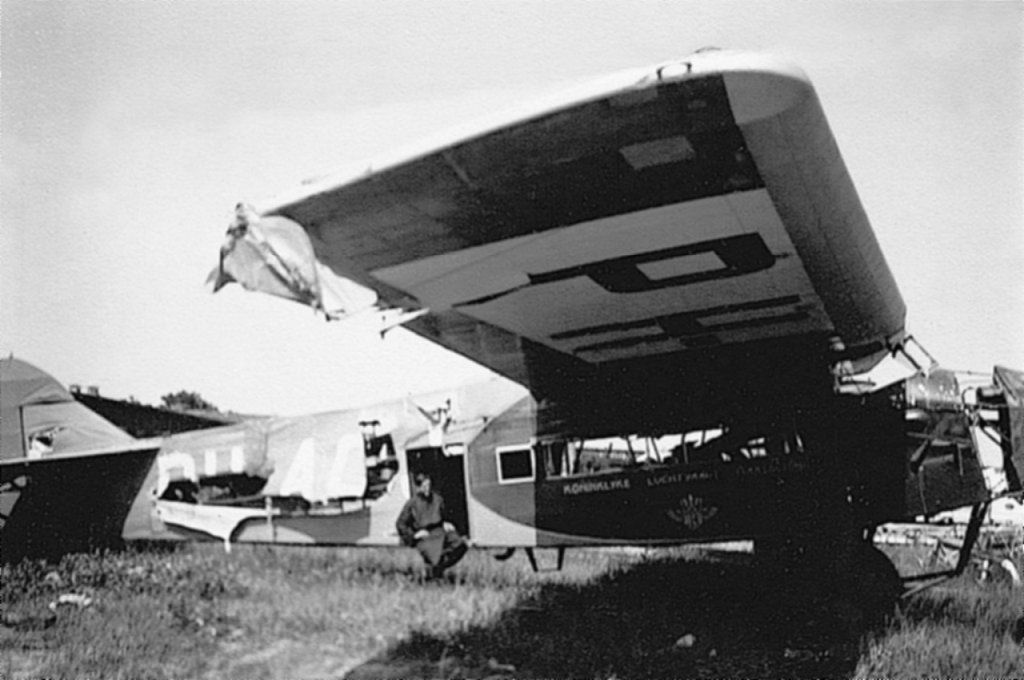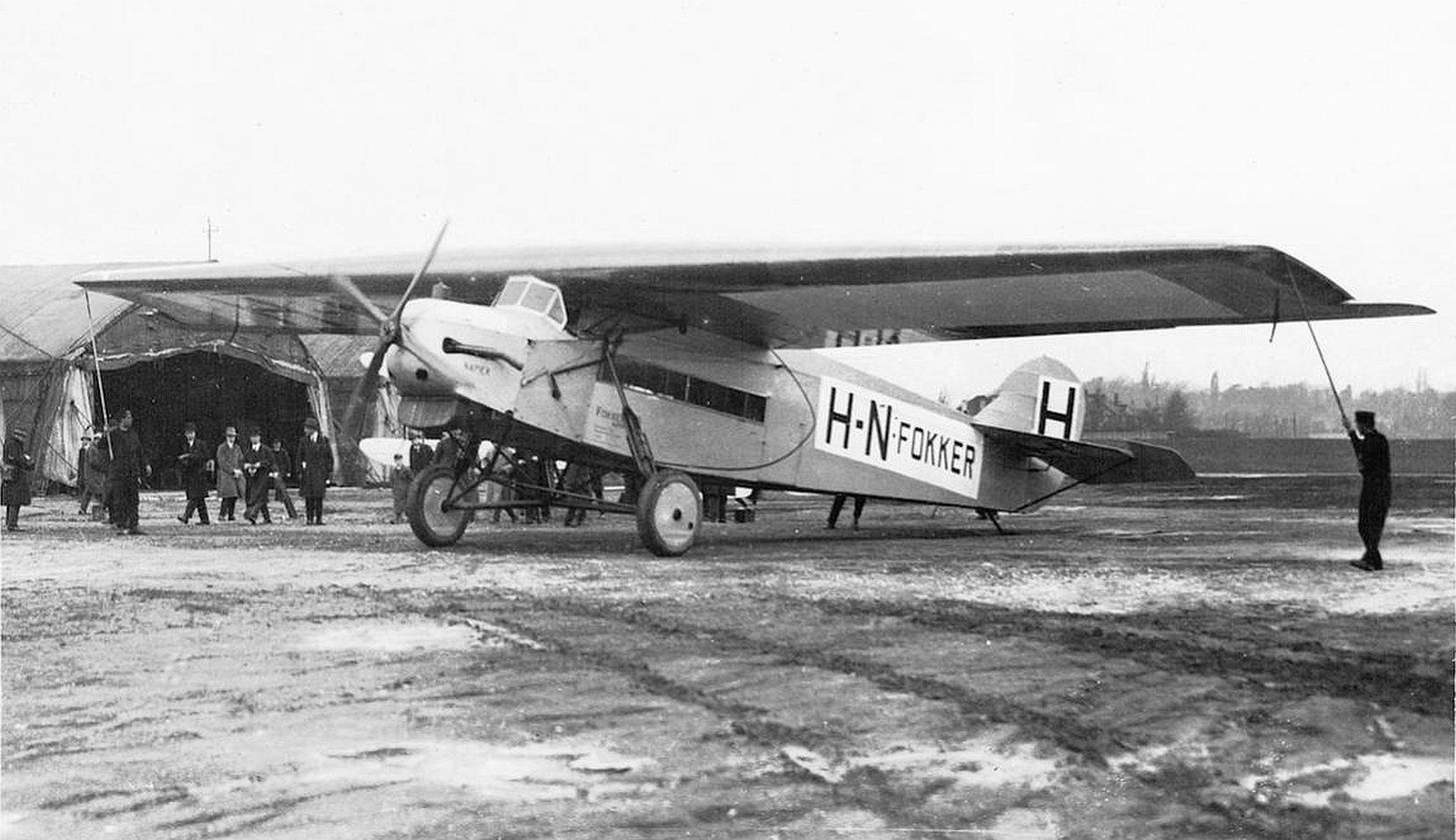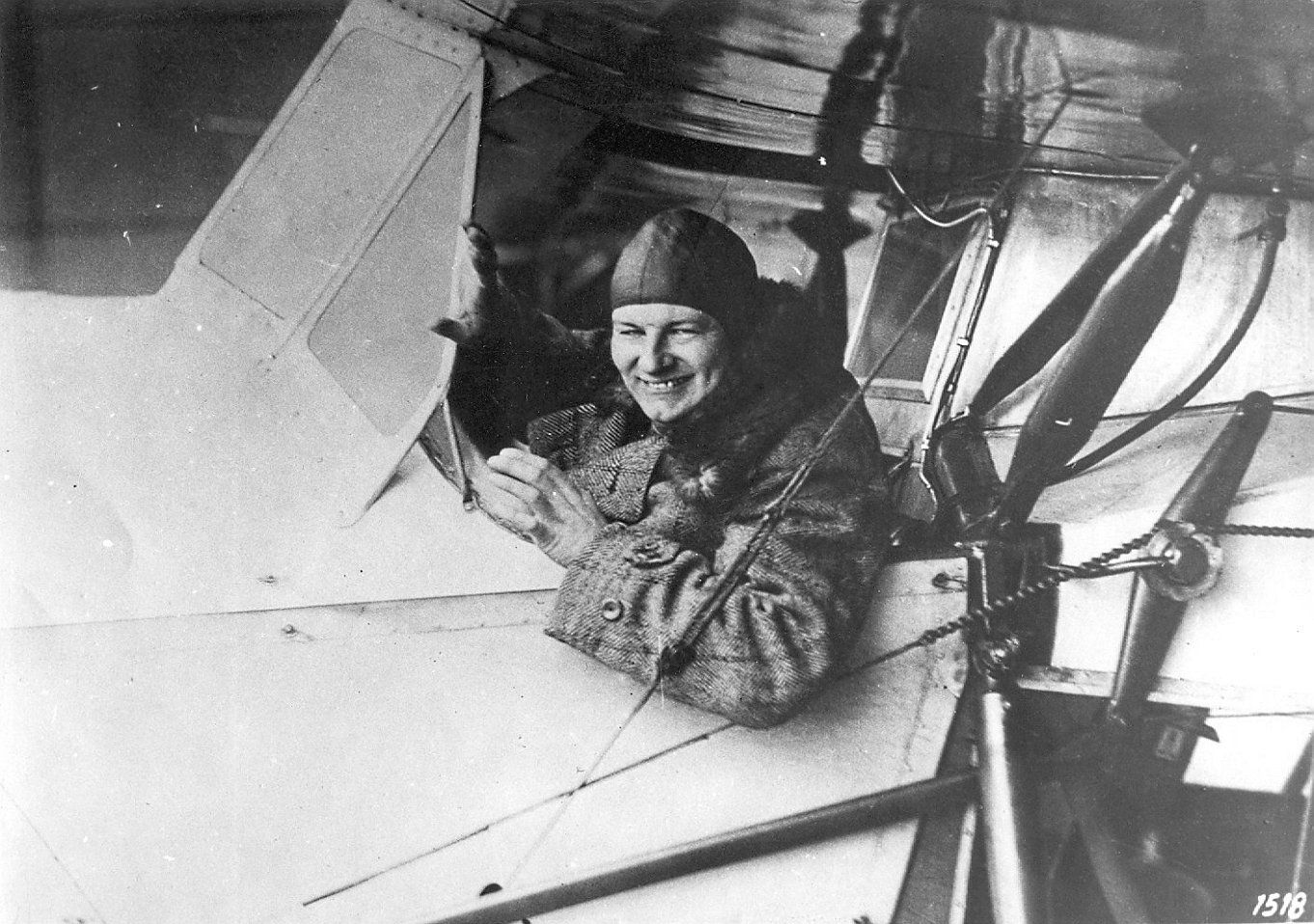Fokker F.VII
The Fokker F.VII was the first of many later designs of Fokker passenger aircraft, not only for the number of follow-up versions of the F.VII itself, but also for Fokker types that followed.
Designer Walter Rethel took the less successful F.V as an example for the design of the F.VII
and developed a single-engine high-decker with a water-cooled 360 HP Rolls Royce Eagle 12 cylinder V-engine, although some aircraft were later fitted with a 400 hp air-cooled nine cylinder Bristol Jupiter radial engine. The F.VII has flown both wooden and aluminum propellers.
The complicated system consisting of rubber bands around the landing gear of the first F.VII was later drastically changed and fitted with suspension.
There was room for two pilots in the cockpit and six passengers in the cabin.
On April 11, 1924, the first flight took place by Fokker test pilot Herman Hess.
All of the five built aircraft were bought by KLM. KLM later sold a number of F.VII’s to other companies.
After a KLM career, one of the five F.VII’s built, was shipped in 1927 to the Fokker factory in Teterboro USA, a subsidiary of the Atlantic Aircraft Corporation.
The first flight to the then Dutch East Indies with a Fokker F.VII in 1924 is widely known as the Batavia flight.
The H-NACC departed from Schiphol on October 1st, 1924 and arrived in Batavia on November 24th.
The long travel time was due to a month’s delay near the Bulgarian city of Philippopolis, due to an engine failure which resulted in a bad landing with subsequent damage to the landing gear.
The last two surviving F.VII’s were in active service until 1936, one of which was with KLM.
Click on the photo to enlarge the photo





